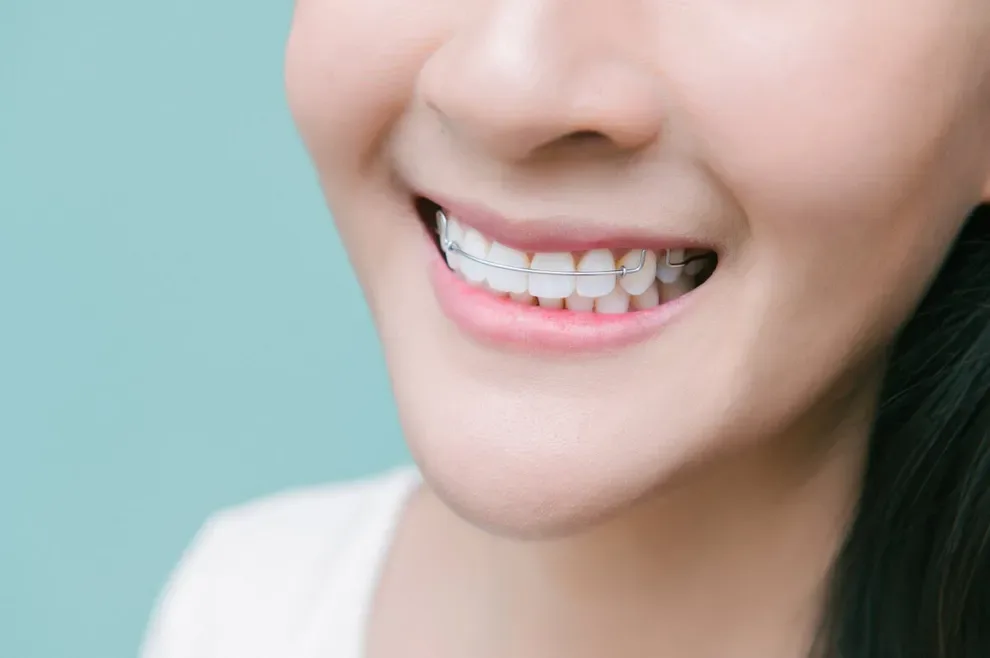White Gums: What Is Causing My Gums to Be Pale?

Table of Contents
- My Gums Have Turned White: What Happened?
- Causes
- Prevention & Treatment
You may monitor your oral health for signs of periodontal disease like swollen or red gums, but if you develop white or pale gums, or white or gray spots on your gums, you may not know what to do. This is likely leukoplakia, a rare condition associated with the irritation of soft tissues in the mouth.
On its own, leukoplakia is harmless, but it can indicate any of the following:
Your teeth do not fit well together.
You chew your cheeks or tongue.
There is pressure on your gums from oral devices like clear aligners or dentures that do not fit.
You struggle with substance abuse issues like smoking or drinking.
You might develop oral cancer.
Getting a diagnosis and treatment quickly means you can get rid of these spots faster.
My Gums Have Turned White: What Happened?
One of the most noticeable signs of gum disease is red, swollen, irritated gums. But what happens if your gums turn white, become pale, or develop white or grayish spots? This might be a condition called leukoplakia, which is a symptom of several potential types of gum disease or irritation. It might also indicate oral cancer.
The best way to treat leukoplakia is to visit your dentist as soon as you notice this change, and discuss potential options and treatment. Your dentist will biopsy the white spot or part of your gums to determine whether cancer might be a potential cause, but a standard oral exam can also help your dentist diagnose other potential causes.
What Are the Causes of White or Pale Gums?
Leukoplakia is a condition in which you develop thick, large, white or pale patches on your gums, inner cheeks, or the bottom of your mouth. You may develop several large patches that make most or all your gums appear pale or white.
Leukoplakia is caused by irritation to the gums and the other soft tissues in the mouth. This irritation can have several sources like these:
Ill-fitting dentures, clear aligners, braces, or other oral devices
Injury to the mouth
Substance abuse, especially tobacco or alcohol use
Leukoplakia is a rare oral health condition, although it is more common in older adults and in people who struggle with substance use disorders. Typically, a specific cause of leukoplakia cannot be identified.
Although leukoplakia is associated with irritation of the mouth, including from biting the cheeks too much, consistent rubbing from protruding or damaged teeth, or oral injury, the condition itself is rarely painful.
Patches that are white or pale might be flat or have an irregular texture. They may feel thick or hard in some places, somewhat like scar tissue. White or pale gums might be more sensitive to the temperature, sweetness, spiciness, or acidity of foods and drinks, but your gums and mouth should not hurt on their own.
Some types of leukoplakia are associated with diseases, including cancer and HIV. Hairy leukoplakia is associated with the Epstein-Barr virus, a rare infection that is more common in people with compromised immune systems, especially from HIV/AIDS or following a bone marrow transplant. Spots may also be associated with oral cancer caused by substance abuse, including tobacco use.
If leukoplakia spots occur along with red, painful lesions in the mouth, this is a sign of pre-cancer. Work with a dentist or doctor to diagnose this condition and get treatment as fast as possible.
Prevention & Treatment for White Gums
Once your dentist has examined your mouth for leukoplakia, they will develop a treatment plan. The focus of treatment is to remove the spots or overall paleness by removing the source of irritation and allowing the gums to heal. This process might include:
Adjusting oral appliances like clear teeth aligners or dentures so they fit in the mouth.
Fixing irregular or rough teeth so they do not harm the mouth and gums.
Adjusting or redoing fillings so they do not put pressure on teeth and gums.
Prescribing medication to apply to the spots to reduce irritation.
Referrals for other treatment as needed, like viral or cancer treatments.
Referrals to substance abuse treatment to reduce alcohol, tobacco, or other drug use.
Leukoplakia might look strange, but it is typically harmless on its own. Instead, it is a symptom of a potential problem that can impact your oral health in other ways.
For example, clear aligners, fillings, dentures, or other oral devices that do not fit well can cause damage that leads to periodontal disease, discomfort, cavities, and other problems. Teeth that are irregular or rough because of an accident can sit poorly in the mouth, and this can lead to discomfort, sensitivity, and dental diseases.
Be sure to discuss your concerns about signs of leukoplakia, like white or pale gums, with your dentist. Get regular dental checkups, so your dentist can monitor your overall oral health.
If you have changes in your oral health that indicate tooth and gum disease, or even oral cancer, see a doctor immediately. Diagnosing these issues early means you get the best treatments as soon as possible.
